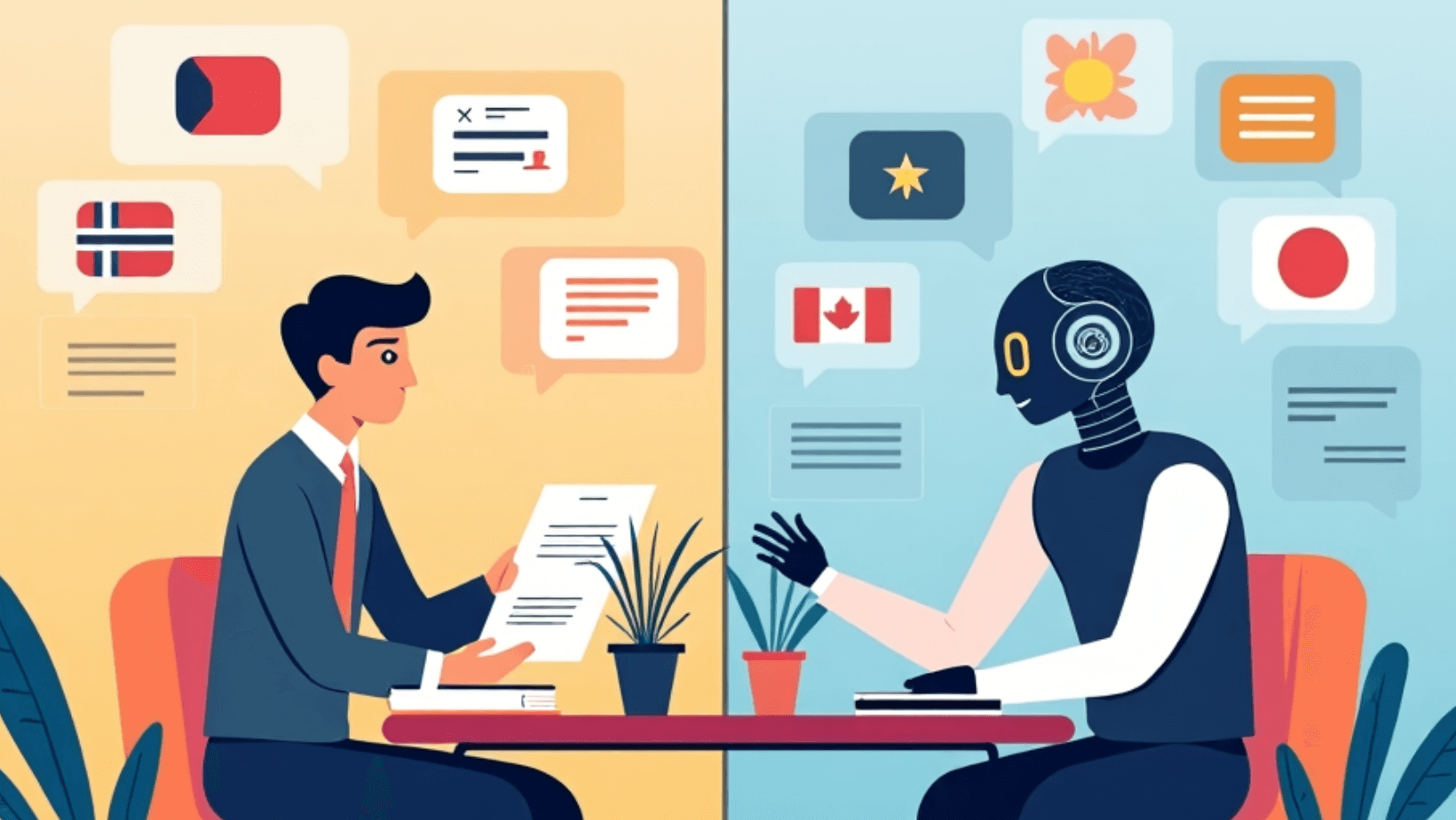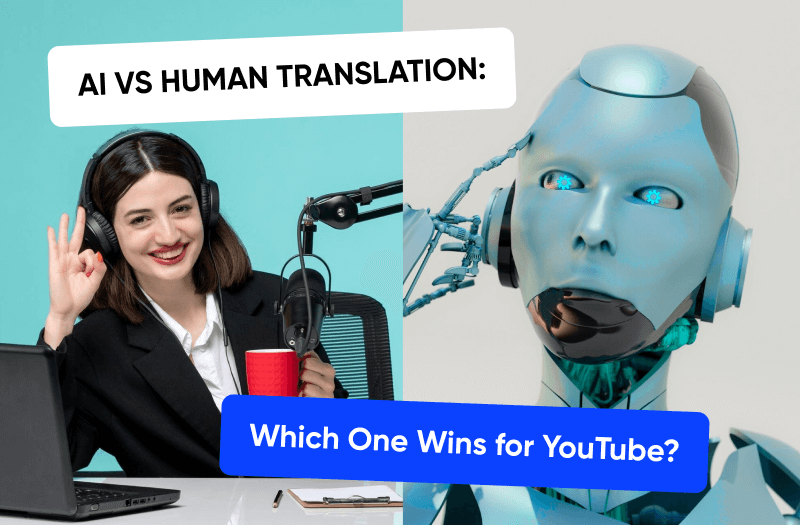Is AI really ready to take over video translation? Or is it just another tech gimmick that sounds great but falls short when it matters?
YouTube is going all-in on AI. Over the past time, we’ve seen it roll out AI-driven tools left and right – AI dubbing, automated Shorts editing, and AI video translation tools. The goal? To make content creation and localization faster and more efficient. But is AI video translation actually good enough?
We’ve tested YouTube’s AI dubbing with our partners, and while the idea is impressive, it’s far from perfect yet. If you’re thinking of using AI video translation, you need to know its limits. Manual video translation still plays a critical role in making content feel authentic and engaging. So, let’s talk about when AI can help – and when you absolutely need a human touch.
The Benefits of Manual Video Translation
If you want to truly connect with your audience, human video translation is non-negotiable. AI can technically translate words, but it often misses the tone, emotion, and cultural nuances that make content resonate.
Think about humor, storytelling, or interviews. AI struggles to capture sarcasm, regional expressions, and context-specific meanings. That’s why manual video translation is essential when your content relies on audience engagement. How to translate a video properly? It’s not just about changing words – it’s about keeping the message intact.
Thinking of translating your content for a global audience? Let’s figure out the best approach for your channel with our Translation & Localization services.
We saw dozens of cases when switching from AI-generated dubbing to professional voiceover artists increased viewer retention by up to 35% AI helped expand their reach, but it was a human translation that kept viewers engaged.
The Advantages of AI Video Translation
AI video translation is the best option for speed and scalability. Machine video translation can generate subtitles, translate metadata, and even do basic dubbing in minutes instead of weeks. And for some types of content, that’s all you need.
AI YouTube translation tools are a powerful asset when it comes to SEO. AI can translate titles, descriptions, and tags, boosting visibility across multiple languages. If you’re creating tutorials, tech content, or DIY videos, AI-powered subtitles can be an effective way to reach new audiences fast. But if your content is more personal or dialogue-heavy, AI’s robotic phrasing might push viewers away.
Our tests confirm one thing. AI dubbing should not be used without human review so far. It’s a solid starting point, but it lacks the emotion and flow of natural speech – and that matters when you’re trying to hold an audience’s attention.
The Benefits of Machine Video Translation
Machine translation is constantly improving, and for large volumes of content, it offers unmatched efficiency. If you’re looking to quickly translate metadata and subtitles, AI video translation tools are your best friend. The ability to instantly translate YouTube video descriptions and keywords can significantly boost your content’s reach.
But AI still struggles with accuracy. We’ve seen countless cases where creators use automated translations, only to find bizarre phrasing, incorrect context, or outright embarrassing mistakes. Relying on AI alone can create a disconnect between your content and your audience if you don’t review and refine the results.
Choosing the Right Video Translation Method for Your Channel
So, what’s the best approach? The truth is, you shouldn’t pick one over the other. AI and human translation should work together.
Here’s how to translate a video the smart way:
- Use AI for metadata translation to boost SEO and discoverability.
- Leverage AI-generated subtitles but always have a human review for accuracy.
- Invest in manual translation for dubbing and storytelling-driven content to maintain authenticity and engagement.
Want to take your content global? ScaleLab handles everything – from translation and dubbing to tailoring content for local audiences. Get in touch with us to find the best strategy for your channel and watch your reach and earnings soar!
Factors to Consider When Selecting Between Video Translation Options
Your content type, budget, and audience expectations should shape your translation strategy. If your videos are mostly instructional or tech-based, AI video translation can handle the basics. But if your content relies on deep engagement, Manual video translation is the only way to keep your audience hooked.
|
Feature |
AI Video Translation |
Manual Video Translation |
|
Speed |
Instant |
Time-consuming but precise |
|
Cost |
Low |
Higher but worth it for engagement |
|
SEO Impact |
Strong for metadata translation |
Moderate |
|
Accuracy |
Inconsistent, needs review |
High, culturally adapted |
|
Engagement |
Decent for subtitles |
Best for voiceovers and storytelling |
|
Best For |
Metadata, SEO, basic subtitles |
Voiceover, emotional content |
AI translation is fast and efficient, but it still can’t match the human touch. It’s great for SEO, metadata, and basic subtitles, but when it comes to emotion, humor, or cultural nuance, AI falls flat.
The best move is to use AI where it works – like quick subtitles and metadata – then bring in human translation for content that needs real connection. If you’re testing new markets, start with AI and scale with manual translation where it matters most.
 If you're serious about global reach, don’t just rely on AI. A smart mix of both will keep your message clear and your audience engaged.
If you're serious about global reach, don’t just rely on AI. A smart mix of both will keep your message clear and your audience engaged.
Want to expand your channel globally? Let’s build a translation strategy that works for your content with ScaleLab. Contact us today and get your videos new global reach!
